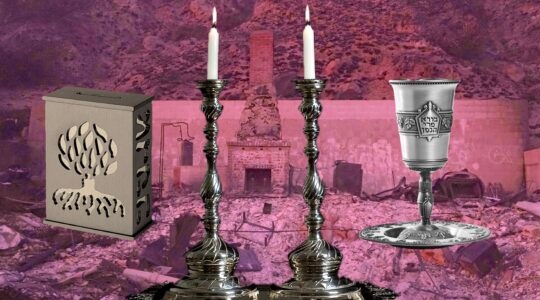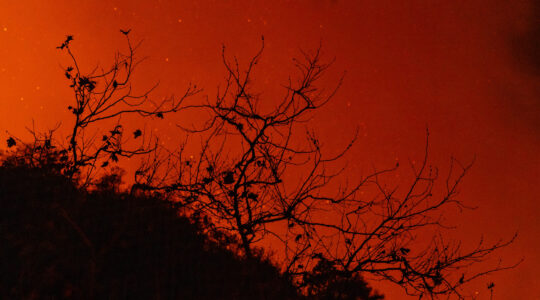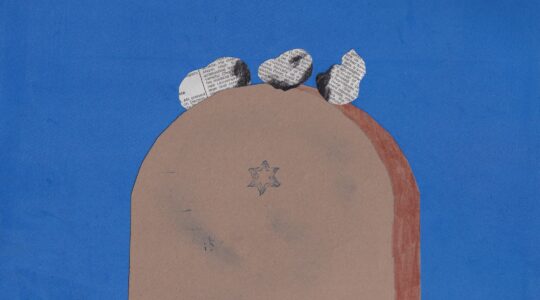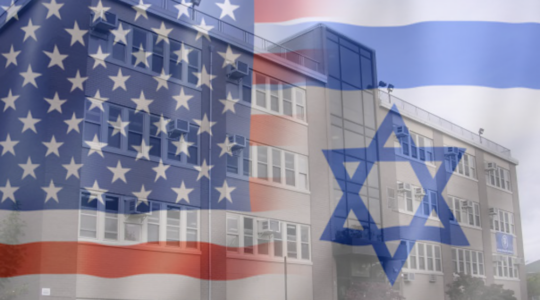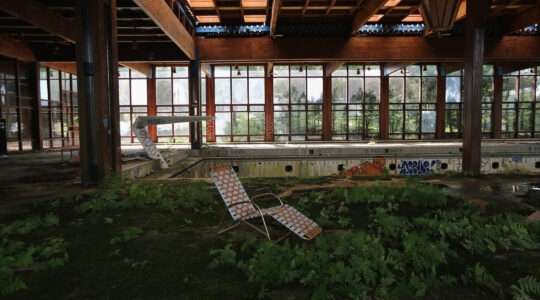Since the tragic shootings in Tucson, there has been considerable conversation about Rep. Gabriele Giffords’ status as a Jew. Giffords, who has identified strongly as a Jew, is the daughter of a Jewish father and a non-Jewish mother. Her choice to consider herself Jewish represents just one of the various ways that individuals now opt in.
Social scientists engaged in studying the Jewish community long ago accepted the notion that “considering oneself Jewish” usually means that one is good enough to be counted. This issue is particularly relevant now in the metropolitan area as UJA-Federation of New York launches the next decennial study of the New York Jewish community.
The stakes are high, as previous studies have identified important emerging trends and new areas of need and opportunity. In 2002, the Jewish Community Study of New York revealed that Russian-speaking households make up 20 percent of New York City Jewish households. This finding led to an intense planning process to determine how to better reach out to this valuable segment of our community. Significant dollars were committed, and programs like the Center Without Walls of the Council of Jewish Émigré Community Organizations (COJECO) were an outgrowth.
In another example, we learned that the percentage of Jewish respondents who identify themselves as Orthodox grew from 13 percent in the 1991 survey to 19 percent in 2002, while 15 percent identified as Just Jewish or non-denominational, and an additional 10 percent as secular/no religion. These and other findings prompted UJA-Federation to establish SYNERGY, a new department with a mandate to strengthen all synagogues and to intensify work with grassroots organizations and non-establishment, progressive start-ups.
The 2002 data were also used to develop strategies for outreach to target populations such as interfaith families in greater New York and Jewish singles in Westchester. And data on the number of Holocaust survivors here (55,000, fully half of all survivors in the U.S.) helped secure several years of funding from the New York City Council for services for this important group.
Beyond providing a chance to understand how members of our community live, the community study provides the opportunity to know where they live, which again has policy and program implications. An intriguing local case surfaced recently with a New York Times story about the changing nature of Williamsburg and young families repopulating that Brooklyn community. What do we know about the Jewish segment of this community? About other developing communities of Jews in the metropolitan area? What services are needed?
Our last Jewish community study was conducted months after 9/11. Almost a decade later, what is the nature of the Jewish community in Lower Manhattan, and what will be the implications? The 2010 U.S. Census has shown a vibrant renewal and expansion of the general population downtown. Who are the Jews who have moved there and what are their characteristics, needs, and potential to contribute to a vital Jewish life in New York?
What other changes have taken place in other neighborhoods around the eight-county area? For example, in 2002 we learned that the number of Jewish households in Westchester grew by 40 percent and, on Staten Island, by 27 percent. Evidence of this growth influenced development of new services for these geographic communities and others and we will now see the current state of those areas.
On another front, there are efforts underway to significantly increase Birthright Israel participation. Birthright had just started at the time of the last community study, so this one will give us our first opportunity to explore the impact of this experience here.
There are also unique segments of our community that we want to learn about more than we did 10 years ago, including the Sephardic community, diverse parts of the Orthodox, and interfaith households. We will ask several questions about use of technology and are making special efforts to speak with cell phone users.
The discussion recently about Rep. Giffords’ status in the Jewish community underscores the need to better understand the ways in which members of the Jewish community identify. Without a clear understanding of the texture of our community, discussion and policy planning lack legs, and opinions offered lack realistic perspective. Conversations about how to widen and care for our collective Jewish tent need facts to ground them.
In surveys to determine the number of Jewish households and individuals throughout North American communities, respondents are often asked: “Do you or anyone else in your household consider yourself to be Jewish?” Additional questions are asked to clarify what that means to the individual. This allows for the drawing of a wide circle. Then, by asking questions about behaviors, family background and affiliations, a greater specific sense of the community is achieved. This line of questioning is reflective of the changed and complex nature of Jewish identity today.
The New York study — being conducted for UJA-Federation by Jewish Policy & Action Research, under the leadership of Prof. Steven M. Cohen and Jacob B. Ukeles — is seeking broad participation to make it a success. We aim to reach 6,000 Jewish households in the area.
In the next few months, your phone may ring — it may even be your cell phone. If you’re called, please talk to us, as your responses will help us track the changing nature of our community, discover communal needs, and help us all on the road to solutions.
With this study, we can follow in our ancestors’ footsteps. The story is told that Abraham and Sarah sat in their tent with all sides open in order to welcome all who passed by. We hope in this spirit to gather data on all segments of our community — for surely good data begets good communal planning.
Lyn Light Geller is executive director of the department of educational resources and organizational development for UJA-Federation. Jennifer Rosenberg is director of research.
The New York Jewish Week brings you the stories behind the headlines, keeping you connected to Jewish life in New York. Help sustain the reporting you trust by donating today.
